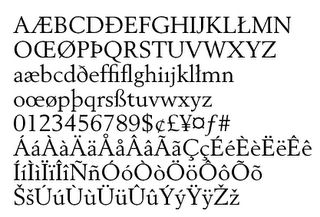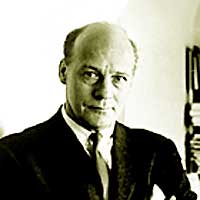TTAB Reverses 2(e)(1) Descriptiveness Refusal of "BERLING" For Typeface Software
Sympathetically noting the "limitations of copyright and design patent protections available to typeface designers," the Board reversed a Section 2(e)(1) refusal to register the mark BERLING, finding it not merely descriptive of "computer software for use in displaying and printing digital typeface designs and typographic ornaments." In re Verbum AB, Serial No. 78064146 (March 10, 2005) [not citable].

The Examining Attorney contended that BERLING is "the name for a particular, well-known typeface . . . and that consumers will immediately understand that applicant's software features the Berling typeface, a particular genus of font type and, therefore, that the mark identifies a key feature of the goods." In support, she introduced webpages using the term BERLING to identify for sale a particular computer font.
Applicant Verbum argued that the term BERLING "has long been recognized as a mark for a typeface design and that the involved goods, computer software, are used to create this typeface design."
The Board observed that the Examining Attorney apparently based her position "upon the misapprehension . . . that the names of long-standing typefaces, as well as the resulting digital fonts of the same name (e.g., that one sees daily on the pull-down menus of computer word processing applications) must necessarily be in the public domain." Applicant Verbum pointed out, however, that although some terms (e.g., Garamond) have passed into the public domain, the names of other well-known fonts have not: e.g., Helvetica®, Arial®, and Times New Roman® are proprietary names legally used only under license.
The Board found persuasive an affidavit from an officer of one of Verbum's licensees, indicating that trademarks "have been important to typeface designers from the time of the manuscript calligraphy of the fifteenth century, and that trademarks continue to be critical to the digital type face designers and type foundries of the twenty-first century." He explained that "[t]he Berling font has inclined and blunt serifs and ascenders that exceed the height of the capital letters . . . . This typeface was originally designed by Karl-Erik Forsberg [in the 1950's] for the Berling typeface foundry."

The Board particularly noted the "intellectual property law challenges facing typeface designers" -- i.e., "the limitations of copyright and design patent protections available." While not dispositive, "these details:"
"highlight the significance of applicant's argument that affirming the Trademark Examining Attorney on this record would fly in the face of 'hundreds of registered trademarks for font names,' . . . including many with historical ties to preexisting typefaces."
While design patent protection may be available for a typeface design, the term is rather short (14 years) and the scope of protection somewhat uncertain. Copyright protection is not available for typeface designs (as opposed to the software code (i.e., the font software)).
Trademark protection for BERLING, of course, protects only the font name, not the typeface design itself. A similar typeface or font sold under a different name, or perhaps promoted as being "like the Berling typeface," would seemingly not infringe the trademark.
A brief, informal discussion of some of these issues may be found here.
Text ©John L. Welch 2005. All Rights Reserved.




0 Comments:
Post a Comment
<< Home